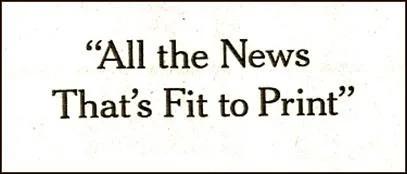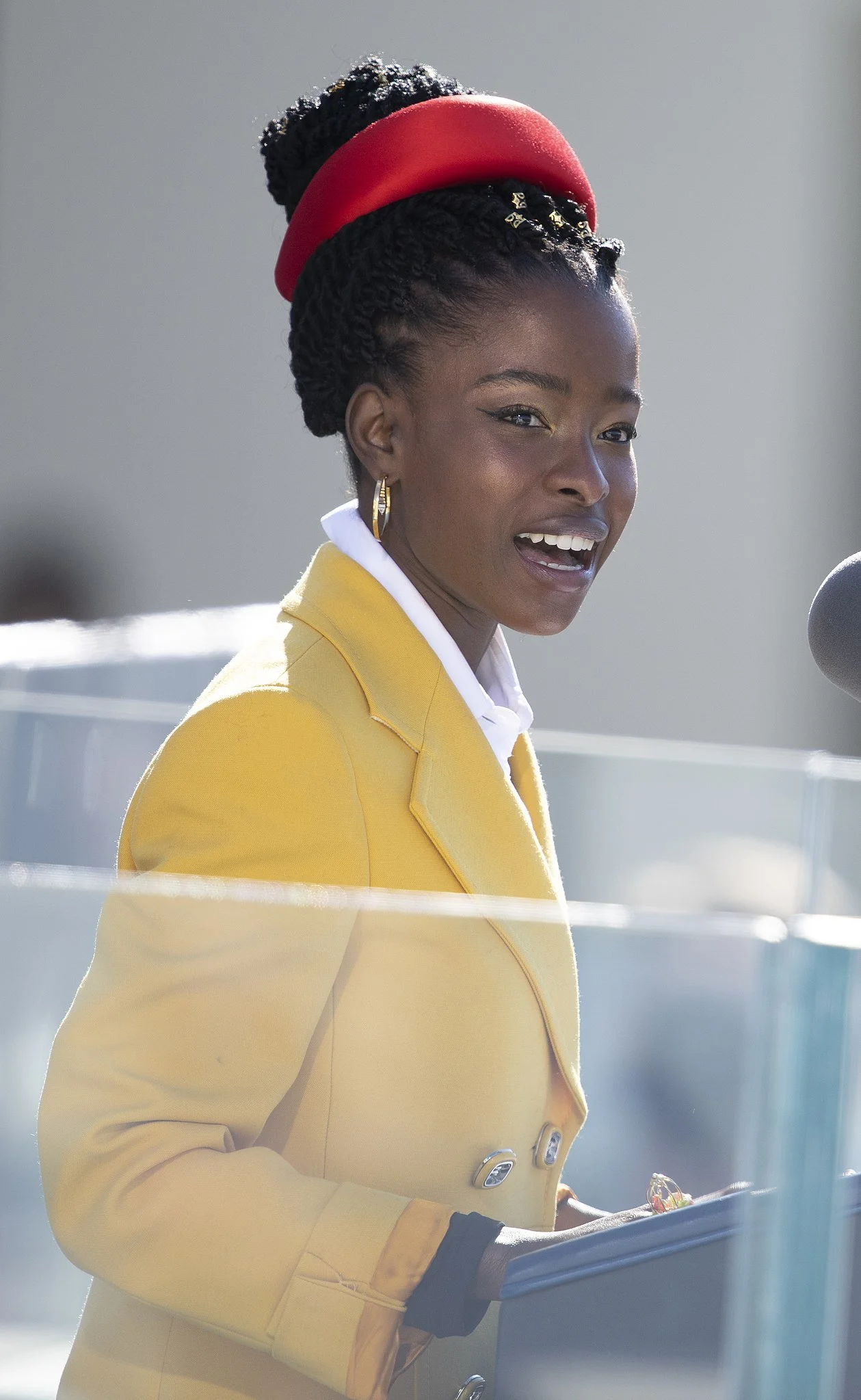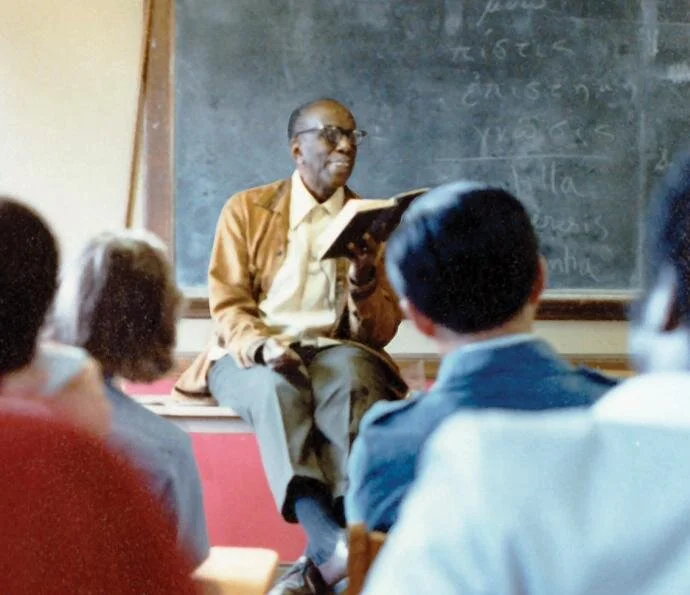Friday Reflection Part I: On Adelaide Teague Case: A Singular Geography of Faith and Witness
This week’s 2-part Friday Reflection offers portraits of two significant figures in the Episcopal Church
Part I: Adelaide Teague Case (1887-1948) is revered as perhaps the foremost academic in the study and practice of religious education in the Episcopal Church and the first woman appointed to the faculty of an Episcopal or Anglican seminary.
Part II: Eliza Howard Sims Burd (1791-1860) who, with her husband, was one of the important founders of Saint Stephen’s and an early proponent of religious education for children and commissioned two dramatic monuments in the sanctuary that celebrate children’s path to Christ through education.
I. Psalm 119 is the longest Psalm in the Psalter and with 176 verses it is very rich. One verse in this Psalm captures who Adelaide Teague Case was and how she lived and worked. It’s verse 105: Your word is a lamp to my feet and a light to my path. By the time she finished college, the details of her story focus on a person who struggled with illness and with shaping an integrated life and ministry that were always in the presence of God. The bio from A Great Cloud of Witnesses is here. Step by step it seems, Adelaide Teague Case’s work became her ministry and in this ministry of study, schooling, teaching, writing and, above all, in service to the Episcopal Church, everything was connected and there were very few stops and starts except those which resulted from her years of illness. Hers was a different calling and Case made this “different” something remarkable, something singular.
II. Adelaide Teague Case was superbly educated. After college at Bryn Mawr, she taught for a year at an Episcopal Boarding School for girls and then began graduate study at Columbia University in 1910, studying for an M.A. in History and Sociology. Before the end of her first year, however, ill health (tuberculosis of the bone from which she suffered all her life) required Adelaide to withdraw and enter treatment at the renowned Trudeau Sanitarium. The consensus was that she would live her life as a semi-invalid and eventually need several surgeries on her legs. Still, after treatment, she toured Europe with her parents and returned home to New York City. And this is where things became better defined, where Adelaide began to connect the dots and the presence of God in the Holy Spirit became much more discernable. Her faith became more alive as she left behind what she called the “dead hand of pious superstitions.”
III. Sometime after college, Adelaide Teague Case had what is often called a “conversion experience.” It is not clear what this experience was specifically, but it was surely related to her commitment to re-evaluating her faith and her work—in that order—and discerning how God might be calling her both to a deeper faith and to a more specific ministry, though the latter was not yet fully formed. Baptized and confirmed in the Episcopal Church, Adelaide wanted her church to serve as a way to nurture and center her faith. She chose to become an Anglo-Catholic and embrace the spirituality that came with the sacramental and liturgical life of Anglo-Catholicism. Her spirituality deepened and as she attended daily Eucharist at her church (Saint Ignatius in New York City) she seems to have been reinvigorated in her quest to live her life in God’s light and presence. Not surprisingly, this new practice of her faith led her to take a position as a volunteer librarian at the Episcopal Church Center. She began this library work—itself very significant for what was to come in her academic life—after returning from the Trudeau Sanitarium and the European trip with her parents. It could very well be that one aspect of Adelaide’s “conversion” was the acceptance of her illness as life-long and something she would need to incorporate into her daily life and work. Here, the “work” became her central issue and the library position at the Episcopal Church Center in New York City took on much greater significance, as she was soon named the librarian and given a salary. During this period, she became very active in the national Episcopal Church and, among other commitments, became a member of the Society of the Companions of the Holy Cross, a society of lay women, which was a way for women in the Episcopal Church to lead a more formal religious life in a worldly ministry.
IV. Out of her experience as the librarian at the Episcopal Church Center, her membership in the “Companions,” a connection that she maintained throughout her life, the growing depth and breadth of her life in the Episcopal Church and her own spirituality, Adelaide Teague Case decided that her calling, her ministry, was to religious education and to full-time graduate study. She returned to Columbia University to seek an M.A. in Religious Education. From the point of her return to graduate study in 1917, Adelaide Teague Case became an educator/trainer in religious education and instruction, and for the next three decades she dedicated herself to this ministry until her death in 1948, all the while battling her illness. Receiving her M.A., Adelaide began to teach in the department of Religious Education at Columbia University Teachers College, from which she received her Ph.D in 1924. Case’s graduate studies “focused on the recently developed ‘progressive’ education movement and child-centered as opposed to teacher-focused agenda and curricula.” Case biographer, Sheryl A Kujawa-Holbrook goes on: “Case fundamentally believed that for religious education to be relevant to children, or to persons of any age for that matter, it must relate to their social environment.” (cf. Biola University Biographical Series, “Christian Educators of the 20th Century.”) In other words, there must be an engagement and integration with the real world.
V. By 1935, Case had become a full professor and chair of the Department of Religious Education. The years at Columbia were productive and satisfying. She published several books, wrote papers and articles, and carried a heavy teaching, mentoring, and advising load. As a pacifist, Case became very active in the Peace movement, especially in peace education. And there were countless numbers of lectures, retreats, workshops and conference she gave all over the country. In all of this extraordinary service and the endless demands that came with this service, was Adelaide Teague Case’s astonishing indefatigability. She never stopped!
VI. In this period, Adelaide Teague Case reached great prominence. Unquestionably, she was considered the “foremost religious educator in the Episcopal Church, if not the United States.” (cf. Kujawa-Holbrook). She was in her beloved New York City, active in her parish and in the Episcopal Church nationally with a rich spiritual life, admired, secure, and successful in her position at Columbia. And yet, in the most astonishing and significant decision of her life, in 1941 at the age of 54, Case decided to leave her position at Columbia and become Professor of Christian Education at the Episcopal Theological School [ETS] in Cambridge, Massachusetts. She was the first woman appointed to the faculty in an Episcopal or Anglican seminary. Case went from a well-paying professorship (and department chair) at Columbia to a still uncertain and undefined position at a seminary where change and progressive education were barely visible, where, as a woman, she was not entirely welcome and students would refuse to take her classes, and where, because of her prominence, academic credentials and experience, she was deemed a significant threat to the all-male faculty. In her almost eight years at ETS, Case was, not surprisingly, successful in virtually everything she did for the institution: for its academic programs, for its admission of women, for its students and her faculty colleagues, and for the Episcopal Church.
VII. As I said earlier in this reflection, Adelaide Teague Case was quite sure of who she was, and always seemed to know what she was doing and why. She was as gifted in her academic life as she was fervent in her spiritual life and in her commitment to her faith and her church. She accepted that she was “different” and acknowledged that this difference would unsettle others, whatever this would mean to them. For Case, everything was a matter of faith, witness, and living a fully integrated life, that is, living a Christ-centered life in everything she did, especially in her academic work. And maybe this was the “difference.” Remember that verse (105) from Psalm 117: Your word is a lamp to my feet and a light to my path. It was the Word which illuminated everything for Adelaide Teague Case.
VIII. It all came down to a never-ending process of discerning her call with an extraordinary generosity of heart and spirit that was truly grounded in the Word, the text for Christian teaching and living a Christian life. As I close, I need to let Adelaide Teague Case speak for herself: What then are the marks of Christian teaching which is in touch with life? It has at least these three characteristics, and it has them in all grades, from the kindergarten up to the adult classes. 1. It faces the ugly facts of our common life and judges them. 2. It encourages experiments in Christian brotherhood and participation in causes for social justice. 3. It studies our religious heritage as a great panorama of human experience where the will of God has been seeming to express itself. (cf. “Teaching that Touches Life” in The Christian Register, 1941). In this time especially, one can only hope and pray for the engagement with the world Adelaide Tague Case inspires and models.
Amen
—Father Peter
This week’s 2-part Friday Reflection offers portraits of two significant figures in the Episcopal Church. Adelaide Teague Case (1887-1948) is revered as perhaps the foremost academic in the study and practice of religious education in the Episcopal Church and as the first woman appointed in the faculty in an Episcopal or Anglican seminary (Part I) Eliza Howard Sims Burd (1791-1860) who with her husband, was one of the important founders of Saint Stephen’s and an early proponent of religious education for children, commissioned the dramatic pieces of memorial sculpture in the Saint Stephen’s sanctuary (Part II)









